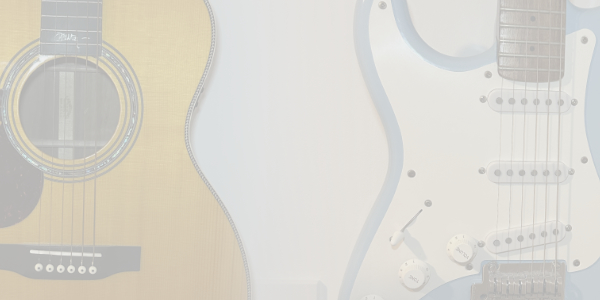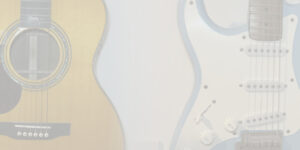
Dunlop Fuzz Face Review – Iconic for all the wrong reasons?
Introduction
When most people think of a fuzz pedal, they think of the Dunlop Fuzz Face. In fact, when most guitarists think of any pedal, many of them will think of a Dunlop Fuzz Face! This pedal is one of the most iconic pedals ever made, having a huge array of guitarists play it, from Jimi Hendrix to David Gilmour and Stevie Ray Vaughan. What we are here to find out is, is it actually any good?
Today we will run through the pedal and give our thoughts on the Dunlop Fuzz Face itself! So, let’s first start by going through the pedal, all its features and tricks, and then hear it in action!
The Dunlop Fuzz Face Fuzz Pedal

The Fuzz Face was originally made in 1966, with the originals being made with germanium transistors (warmer and smoother fuzz but can sound different in different temperatures). Later, they made them with silicon transistors, which were more stable but provided a harsher sound. The version I have here is a germanium Fuzz Face made by Dunlop, who took over in 1993.
The Dunlop Fuzz Face is a really simple pedal! A simple circuit enclosed in a massive round red case. Only five things on the pedal to use. So, let’s start with the controls! Both of them! At the top of the pedal, you have the volume knob on the left and the fuzz amount on the right. Below the controls, you have the foot switch to turn the pedal on. The Fuzz Face doesn’t have an LED to tell you it’s on. At the top of the pedal, you have the input (on the left-hand side) and the output (on the right-hand side). The Fuzz Face is powered by a 9v battery only; there is no option to power the pedal with a power supply. There is no LED on this pedal to tell you when it either has power or is active.
More on the Dunlop Fuzz Face Pedal
If you want to get to the battery, you have to undo a single screw on the bottom of the pedal to take the base plate off, this opens it up for you to put a 9v battery in. You can then screw the base plate back on. As long as there is no jack in the input socket, no current is drawn!
You can pick the Dunlop Fuzz Face up for around £150 brand new. However, if you shop around, you can either find it on sale, or you can find some amazing second-hand deals online. So make sure you have a look around.
The Sounds
For the demo, all the guitar sounds you hear have the pedal switched on! Every guitar that was recorded had the Dunlop Fuzz Face switched on! I just used the volume to control the gain! You will hear two guitars, a single-coil Strat and a Flying V loaded with P90s. Hopefully, this gives you a taste of what the fuzz sounds like through different guitars.
After that, we run through some sounds of the fuzz. Not a lot to cover, really—only two controls to worry about. Most of the time, this will be somewhere near max! It is worth noting that due to the nature of transistors and the circuit, all fuzzes will have a slightly different sound and react differently.
What are my thoughts?

First off, this pedal is glorious! I can see why it has such a following! If you want a one-pedal rig, this will get the job done! It is loud, gain, fuzzy, and fun! The sounds you get from this pedal are just outrageous! Everything from sparkly cleans to meaty heavy fuzz! However, it can all be controlled using the volume on your guitar and (as long as you have good pots) is super responsive to any change! I found that for the best results, just turn the volume and fuzz all the way up to max (maybe bring the fuzz down to around 3 o’clock) and just use your guitar volume to adjust the gain amount!
As I mentioned above, if you were in a 3-piece or 4-piece blues band, you could easily just have this pedal and keep it on all night and control the gain from the volume control! Another advantage is you have to run it off a battery, so you could put it on top of your amp, switch it on, and just leave it! Super simple rig but a whole host of sounds! We have described the thick lush fuzz, but it’s worth noting that turning your guitar down gets you sparkly cleans and beautiful crunch and overdriven sounds! When people hear “Fuzz,” they think of that extreme fuzz sound, which you can get out of this pedal. However, using the volume, you can get some wonderful overdriven sounds and pushed clean sounds! For a pedal with only two controls, you can get a whole host of sounds!
Anything Else?
As glorious as this pedal is, there are a few bad points, some of which might be deal-breakers for most of you! First one? Battery only! This pedal can only be powered by battery! So if you plan to gig it regularly, then make sure you have ample 9v batteries on hand! The pedal doesn’t draw much power, so a battery could last a while (depending on use), but when it is low, you will know—it gets spitty and crackly. So just make sure when you are done with it, you take the input jack out so it isn’t draining the battery.
The next bad point is the size! The Dunlop Fuzz Face is a monster of a pedal! Its awkward shape and size make it the least pedalboard-friendly pedal you can get! Like to know when your pedal is on? Well, best of luck! There is no LED on this pedal! Nothing! No lights at all! Of course, you will be able to tell when it is on, but it would be nice to have a little light to let you know when! The final “bad” point is that the input and outputs are the wrong way around! The output is on the right, and the input is on the left! Why this is the case, I can’t seem to find out. However, it is a bit of a hassle! If you are putting this pedal on your board, be prepared to have to cross patch cables!
Final Thoughts
However, it is worth noting that even with all these bad and negative points, I love this pedal! I think it is fantastic and amazing fun to play! It really teaches you to use your volume and play “naked.” Great way to learn and practice your dynamics. It is also perfect for thickening up single coils. Grab your Strat and plug into a Fuzz Face for a meaty sound!

Conclusion
The Dunlop Fuzz Face has been absolutely fantastic fun to mess around with! Between this and the ToneBender by Goliath FX (Review Here), I am starting to understand and get into fuzz! One thing the Fuzz Face has made me do is learn to use my volume and use more dynamics!
Any other pedals you want to see? Maybe we should get a silicon Fuzz Face in to see the difference! Would you want to see that? If you have any ideas for pedals or anything you want to see, please drop us an email here.
We hope to review more plugins soon, we have a few lined up and In Testing so if you can think of any you want us to try please let us know over on our Instagram!
Dunlop Fuzz Face Links:
Check out our other Articles here


2 thoughts on “Dunlop Fuzz Face Review – Iconic for all the wrong reasons?”
Comments are closed.